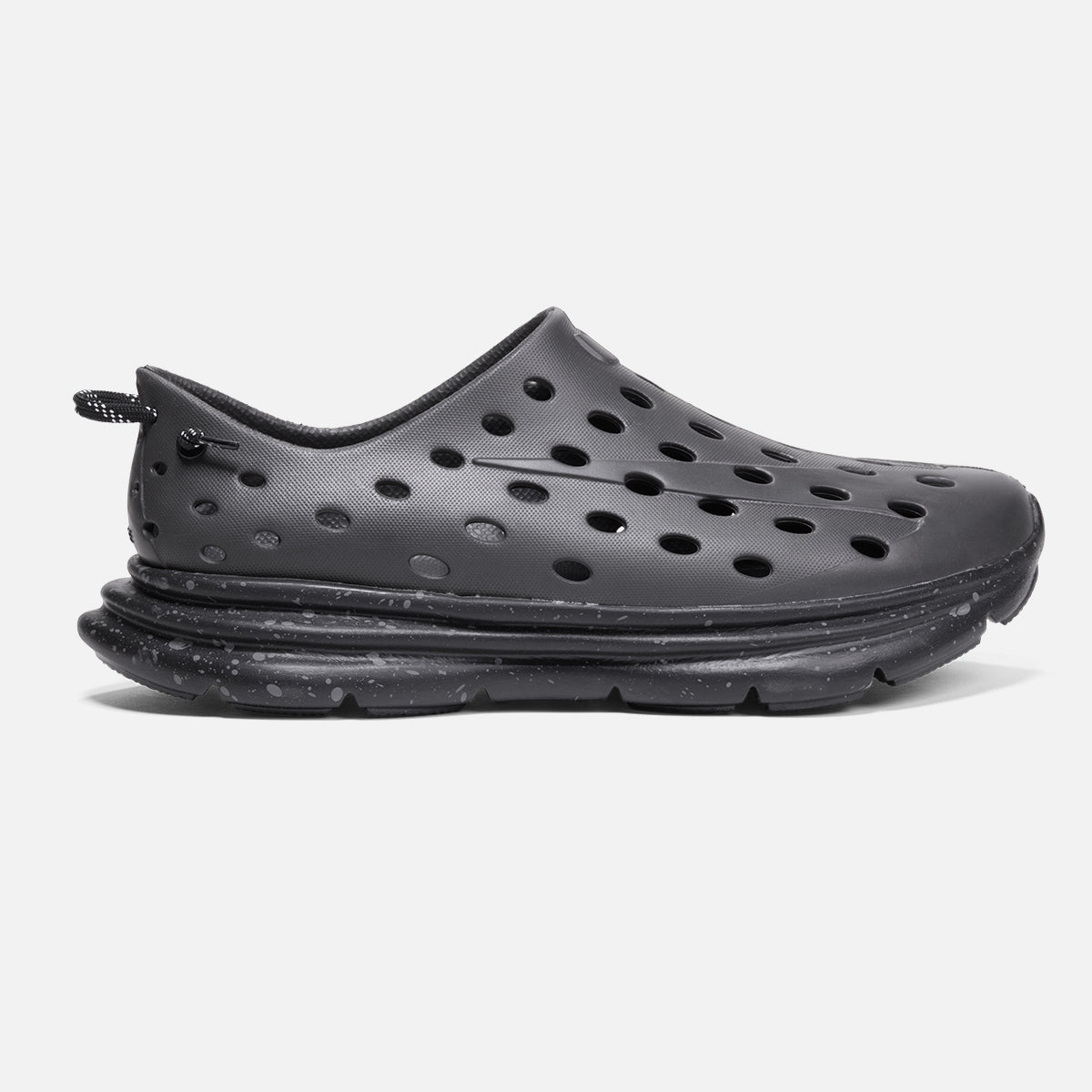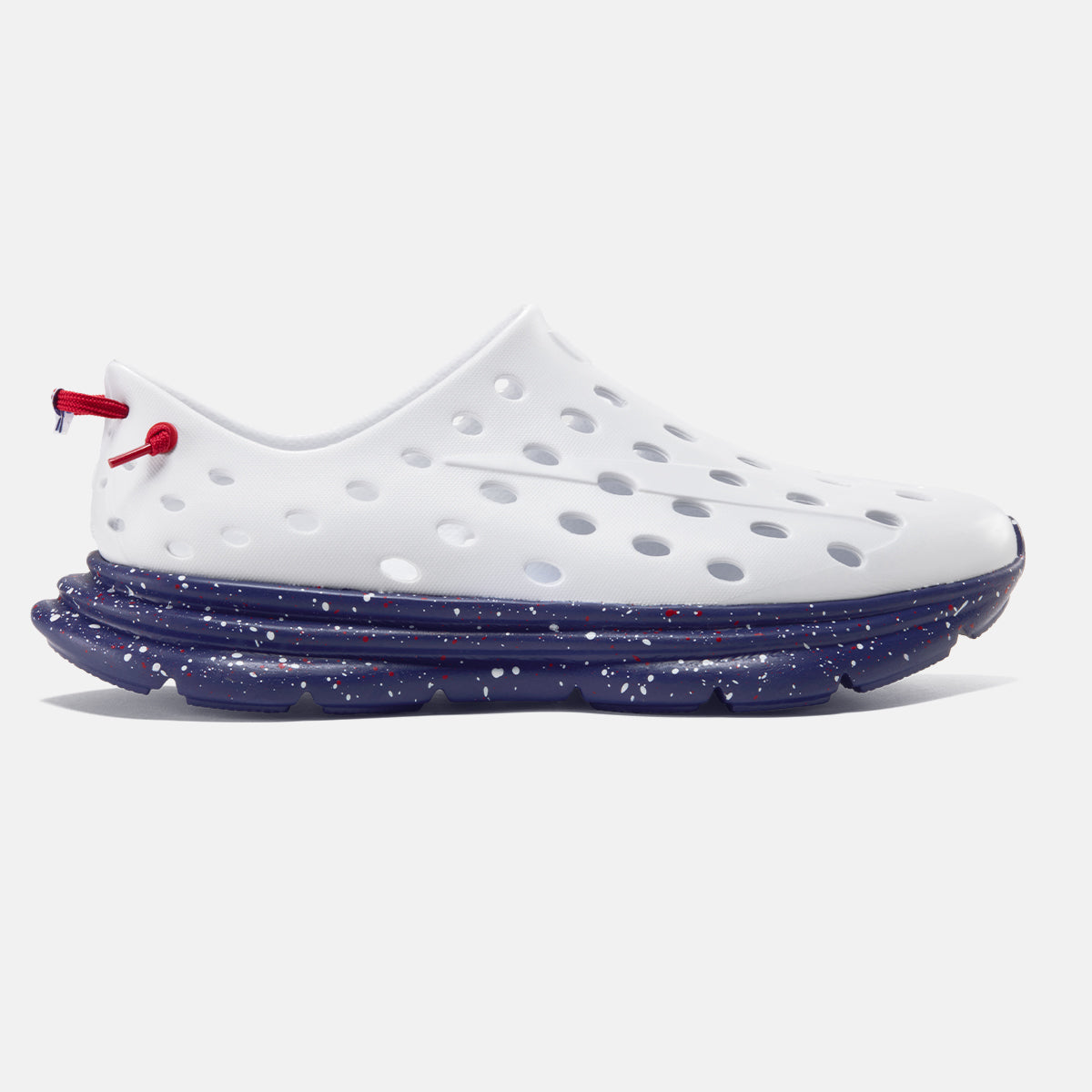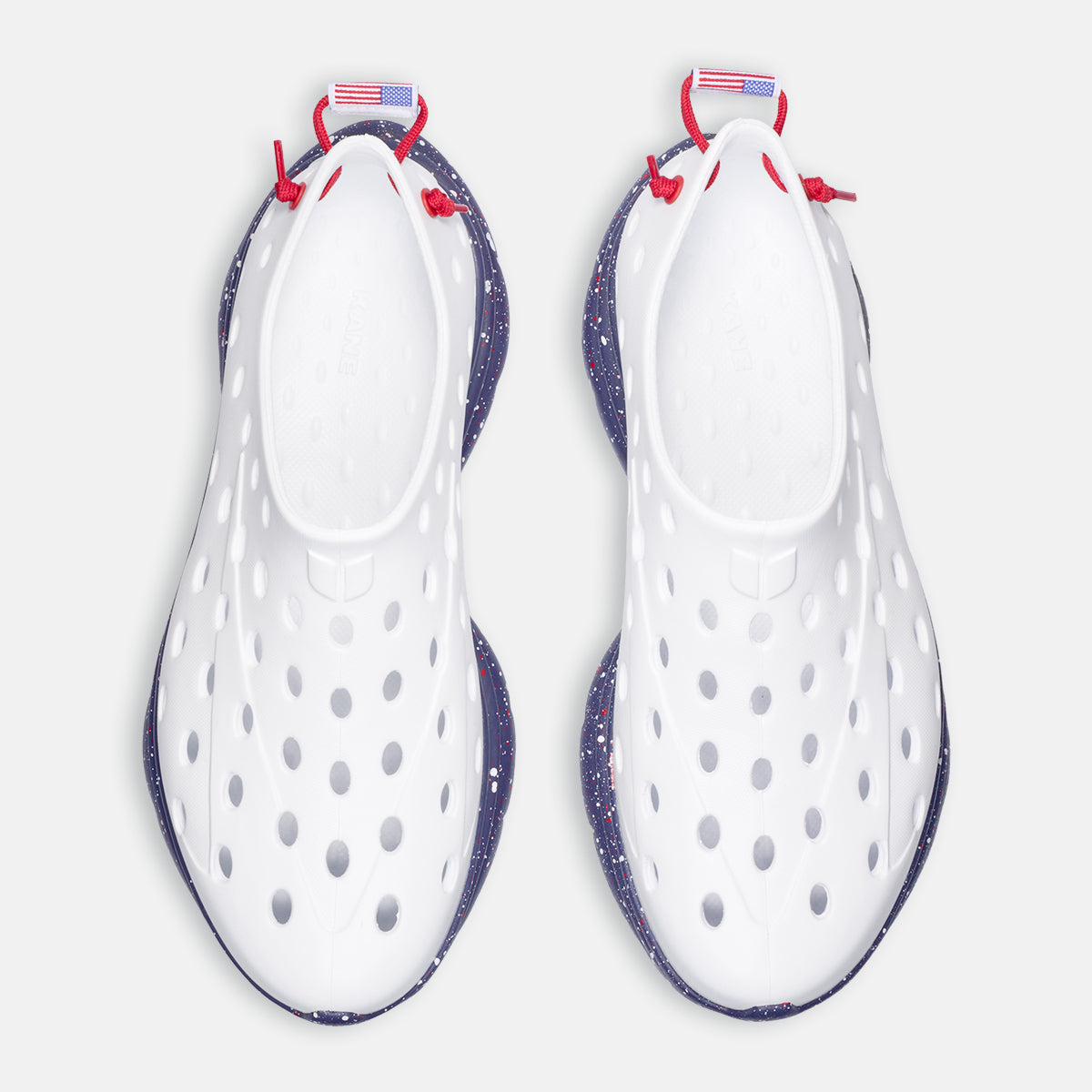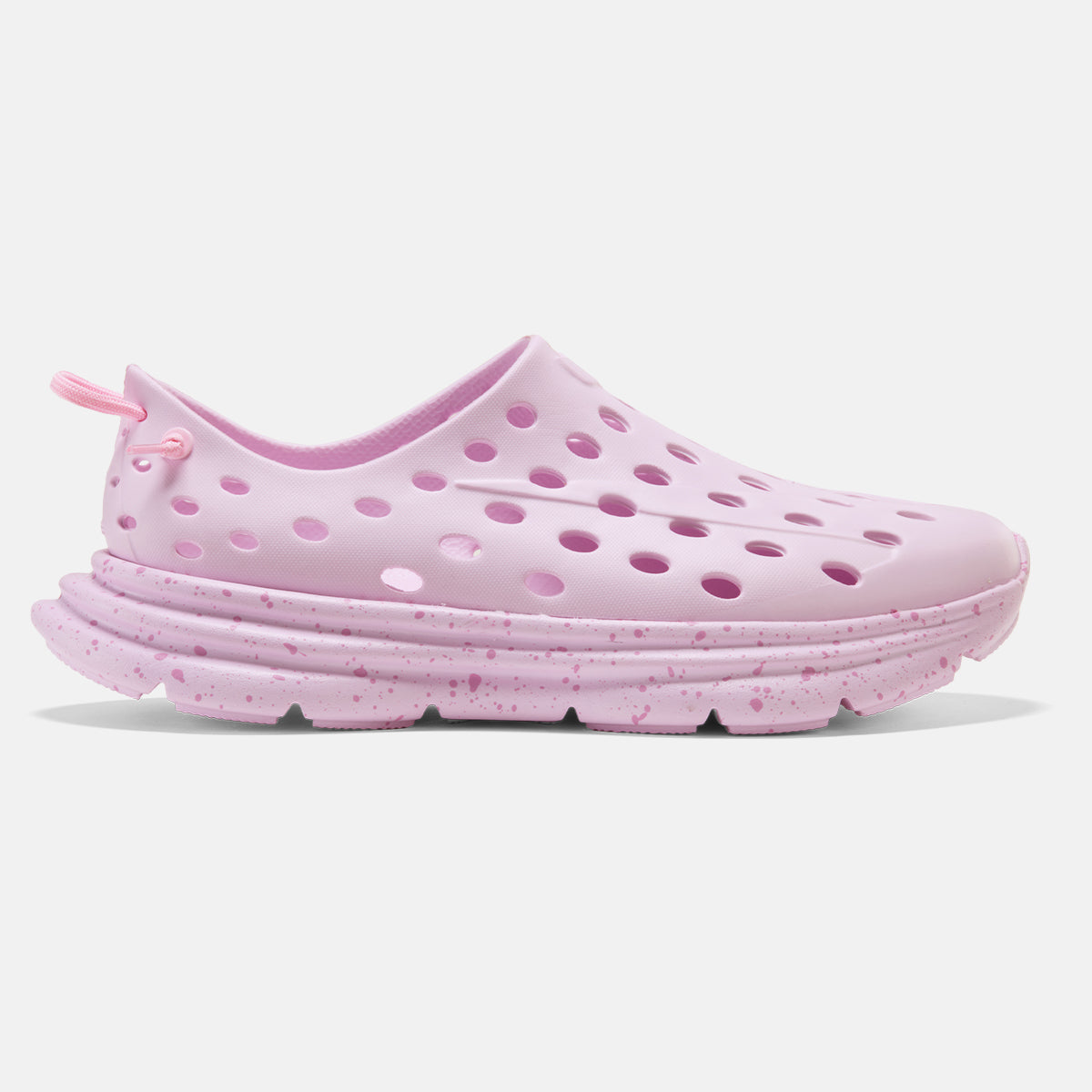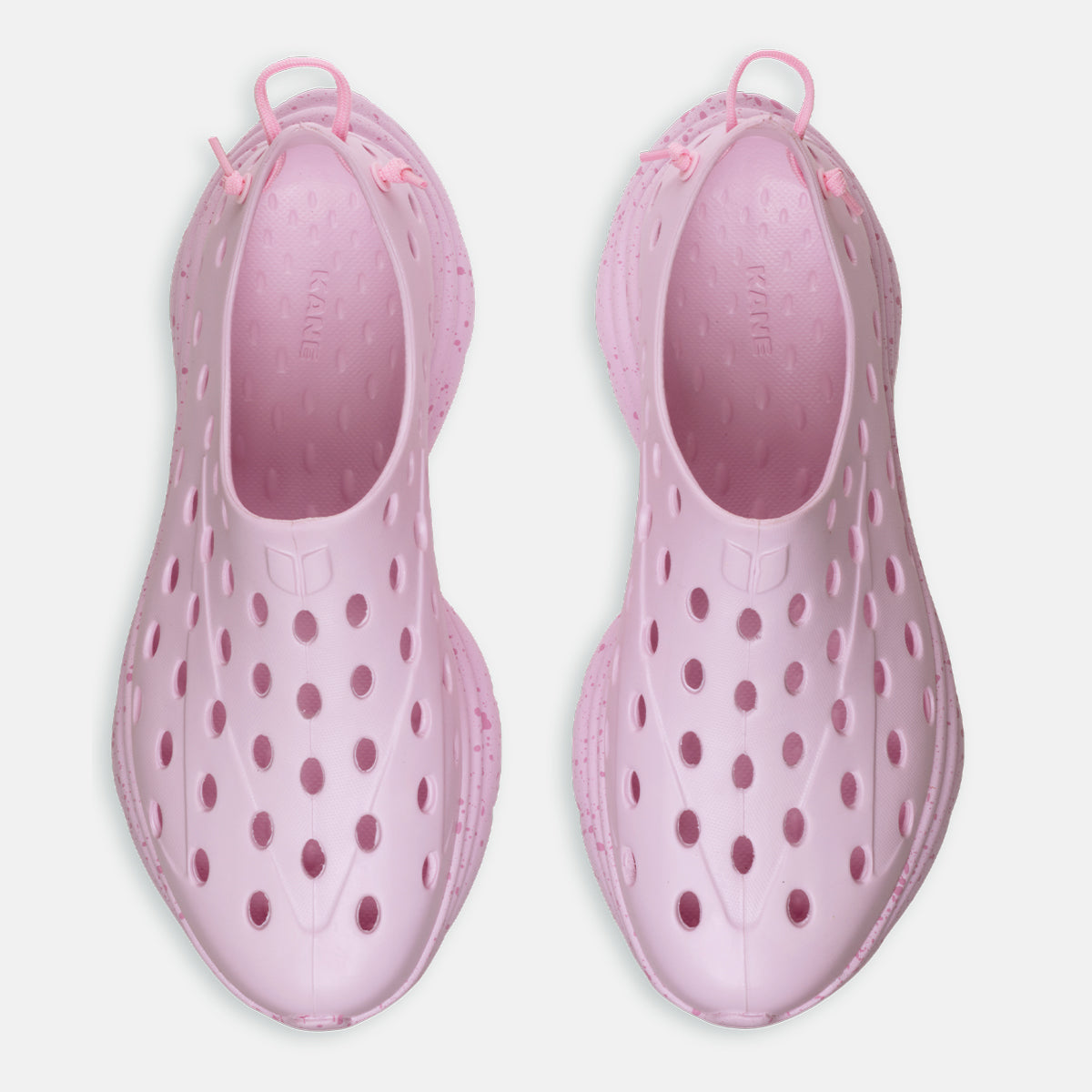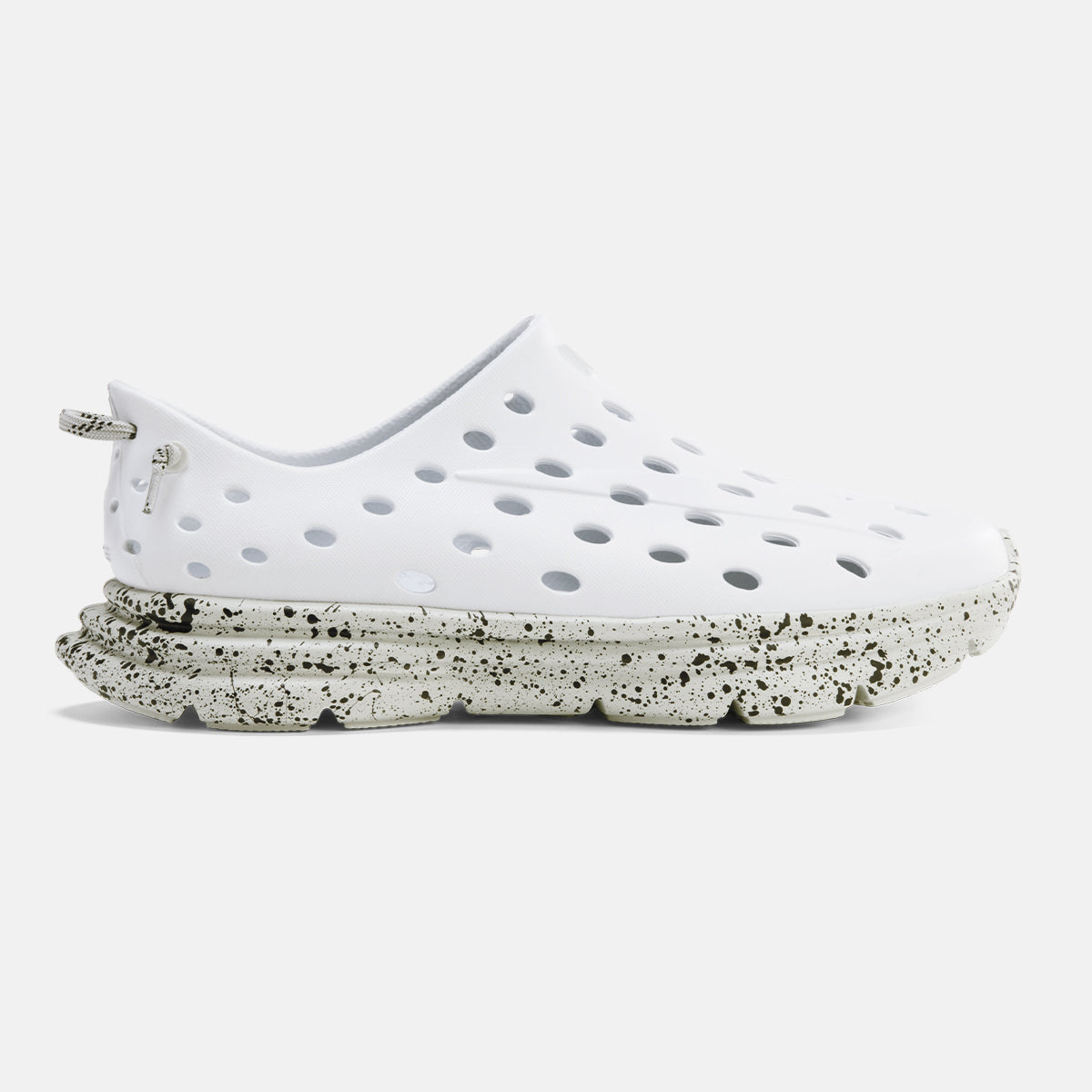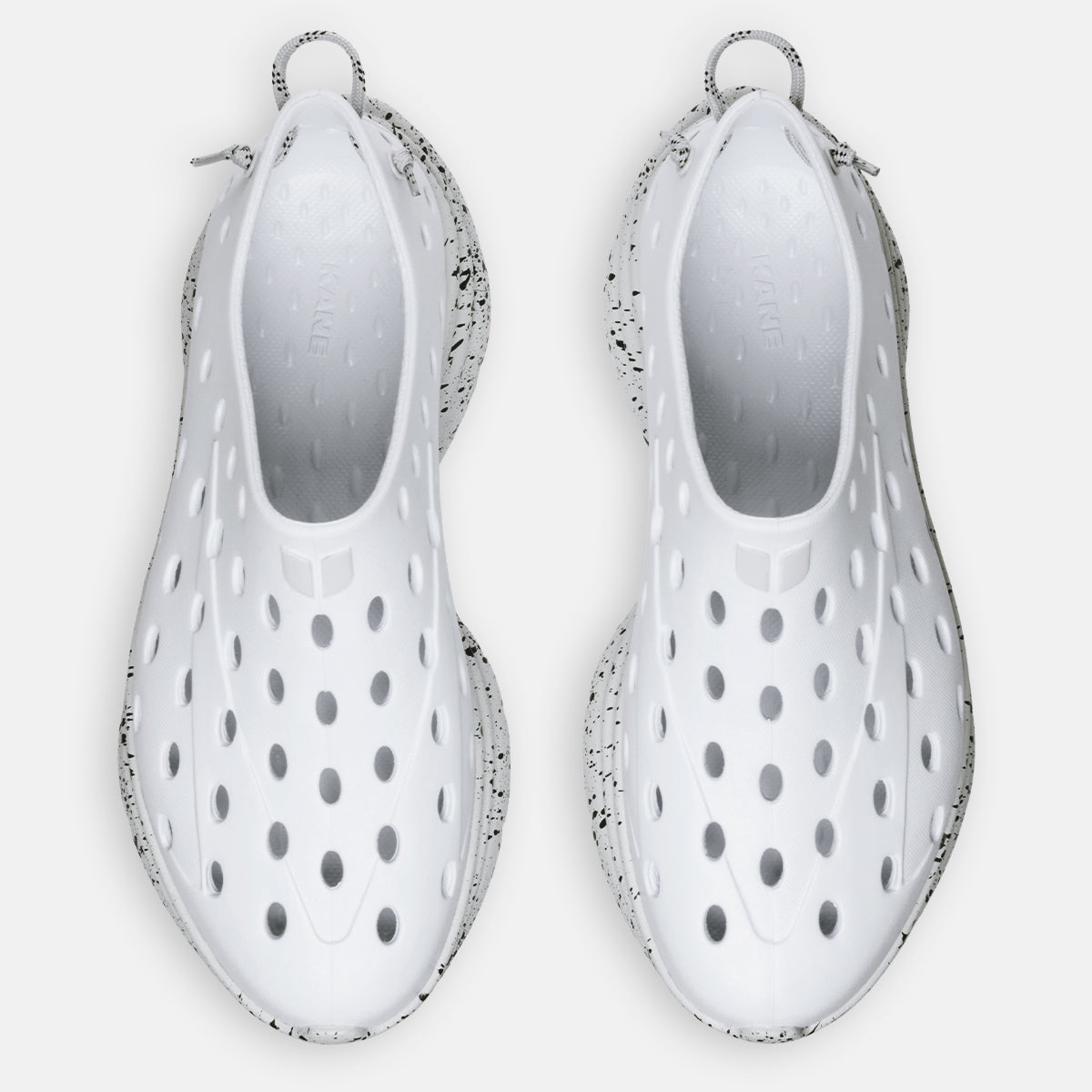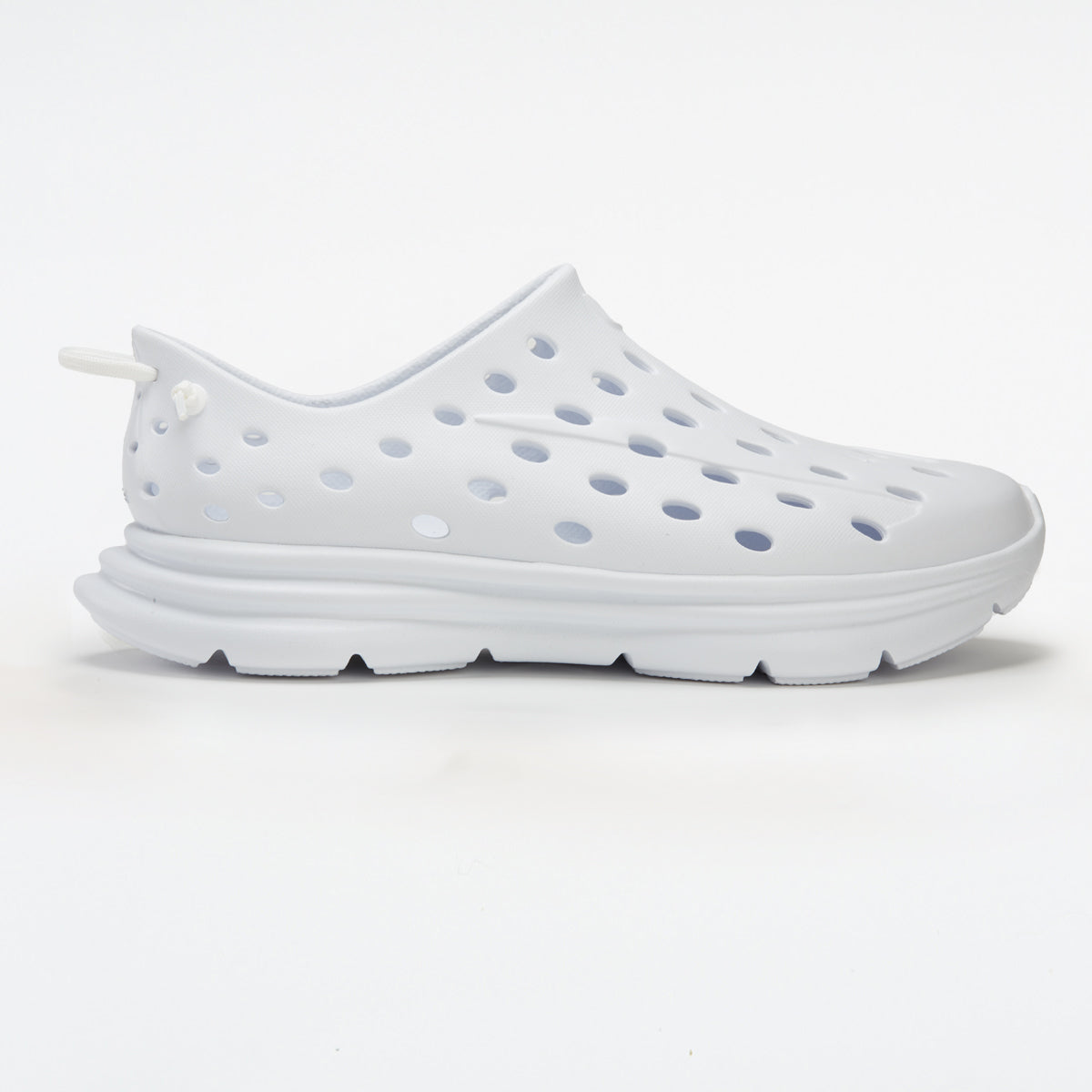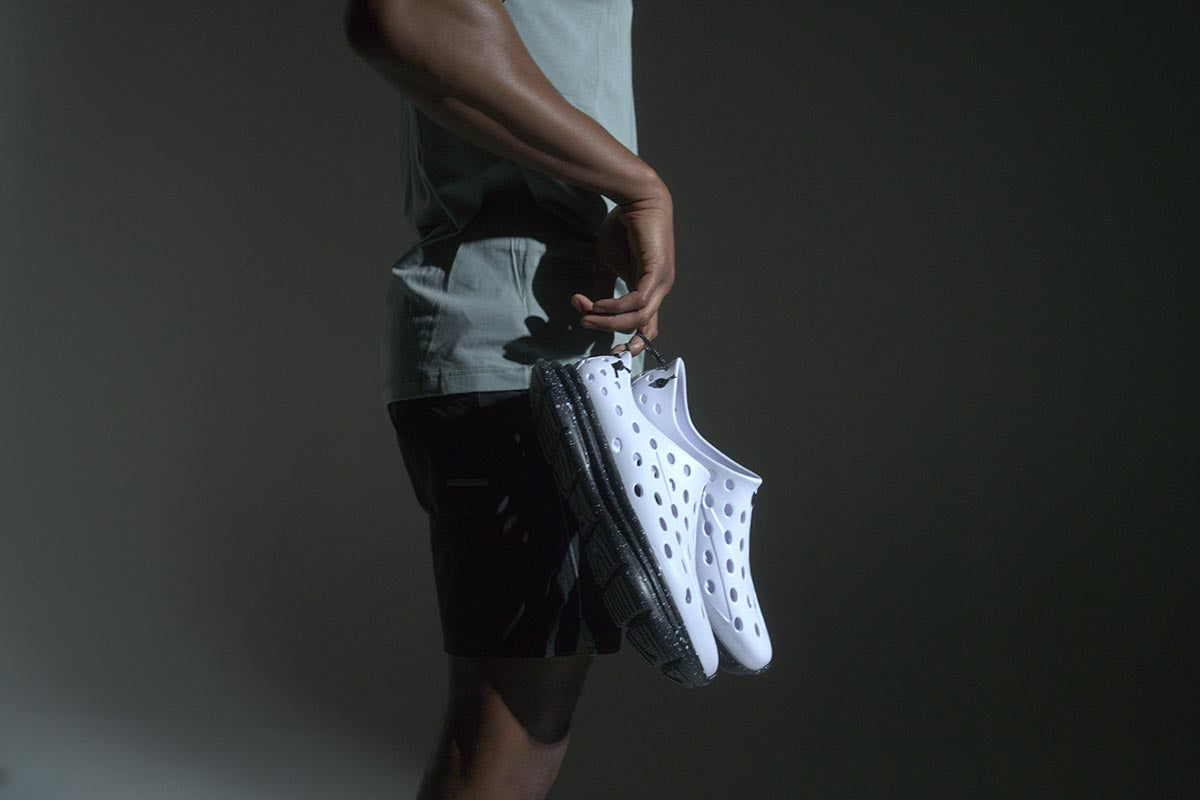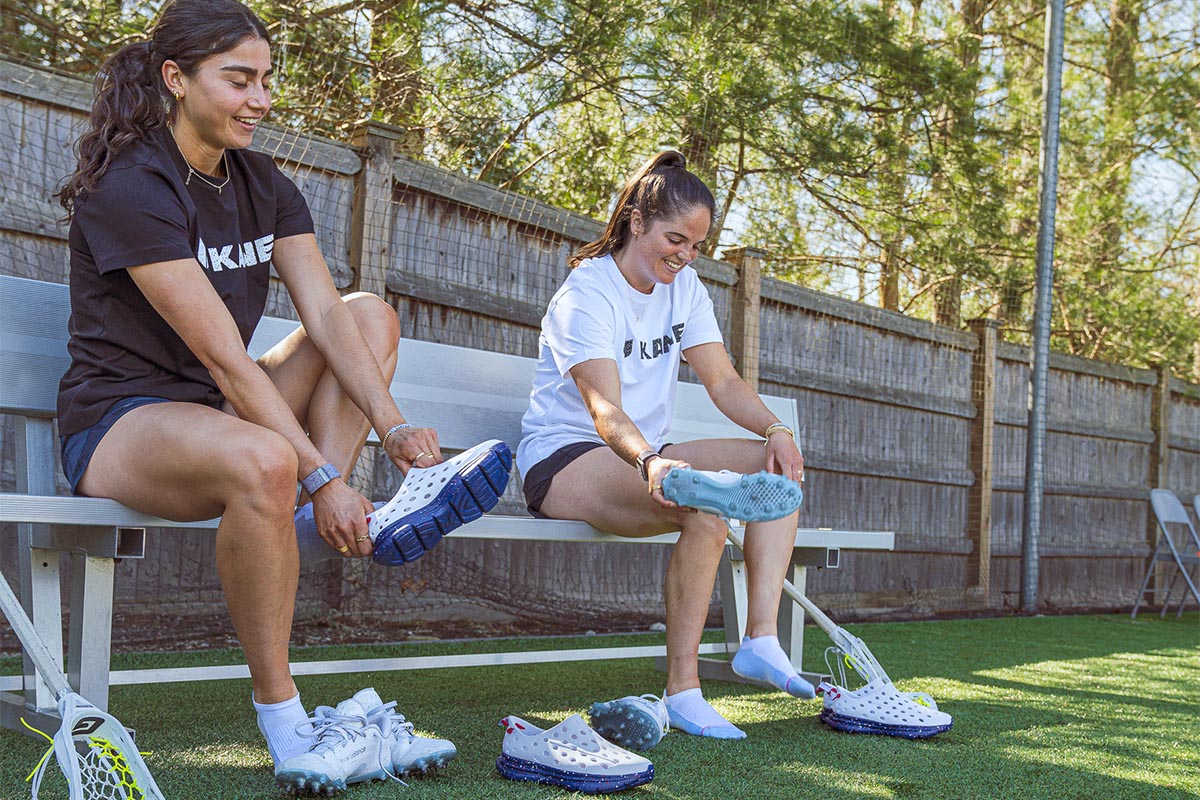Arch support benefits for faster recovery and peak performance
You push through another workout, but your feet ache for hours afterward. Your knees hurt after a day on your feet. Lower back pain becomes your constant companion. The culprit? It's not your training intensity or your job. It's what's missing beneath your feet.
That pain often stems from one overlooked factor: inadequate arch support.
Proper arch support does more than cushion your feet. It's the foundation your body depends on for correct alignment, injury prevention, and peak performance. Whether you're an athlete pushing for PRs, a professional standing all day, or someone tired of chronic pain, the right arch support transforms how your body moves and recovers.
Key takeaways
- Your feet affect everything above them. Proper arch support eliminates knee pain, improves posture, and prevents injuries like plantar fasciitis.
- Not all feet are the same. Knowing your arch type (flat, normal, or high) is key to finding support that actually works.
- The right arch support fits your life, whether you're training hard, working on your feet, or tired of constant pain.
What are arch supports?
Arch supports are inserts or shoe inserts designed to provide additional support to your foot's natural arch. They're placed inside shoes to improve foot health, distribute pressure more evenly, and enhance comfort.
Arch supports come in various forms:
- Over-the-counter insoles: Pre-made options available at most retailers
- Custom orthotics: Prescription devices molded specifically to your feet
- Built-in shoe support: Footwear designed with arch support integrated into the construction
The primary purpose of inserts is to address arch-related issues. These might include high arches, plantar fasciitis, or general foot pain. They work by stabilizing the foot, correcting biomechanical imbalances, and alleviating discomfort through targeted support.
Understanding your foot arch type
Your arches act as natural shock absorbers, distributing your body weight as you walk or run. The arch is formed by bones, ligaments, and tendons, all working together.
The 3 types of arch
- Normal arch (neutral foot): A normal arch has a moderate curve that provides balanced weight distribution. This type naturally handles shock and pressure efficiently.
- Flat arch (flat feet): As many as 26% of adults have flat arches, according to the International Research Journal of Innovations in Engineering and Technology. A flat arch causes the entire sole to make complete contact with the ground. This can lead to excessive inward rolling of the foot (overpronation), creating stress on the ankles, knees, and hips. People with flat arches often experience foot pain, stiffness, and reduced mobility.
- High arch (cavus foot): A cavus foot has a noticeably raised arch. This concentrates most of your body weight on the heel and ball of the foot. The rigid structure of high arches can result in inadequate shock absorption, leading to ankle instability, muscle stress, stress fractures, and pain.
Finding your arch type
You can determine your type of arch at home with a simple test. Wet your foot and step on a piece of cardboard. Examine the imprint:
- A regular arch shows about half the middle section
- A flat arch displays the entire sole
- A high arch reveals only the heel and ball, with little to no middle section
What are the arch support benefits for your entire body?
Arch support delivers advantages that extend far beyond your feet. Here's how the benefits of arch supports impact your whole body.
Pain relief and injury prevention
Without adequate support, the heels and the balls of your feet bear excessive pressure, which can cause chronic pain. Arch supports redistribute this pressure across your whole foot, helping to relieve pain in your heels, arches, and forefoot.
Wearing arch supports prevents fallen arches. When your arch collapses over time, it can trigger plantar fasciitis, which is inflammation of the plantar fascia connecting your heel to your toes. They also control overpronation, protecting against stress fractures, shin splints, and chronic foot ailments.
Improved alignment from feet to spine
Your feet form the foundation of your entire body. When that foundation lacks support, everything above it compensates, potentially creating misalignment through your ankles, knees, hips, and spine.
Proper arch support maintains your feet in their optimal position and promotes alignment throughout your body. Many people discover that addressing foot problems also resolves knee pain or other issues with their knees, hips, and back.
Enhanced stability and recovery for active lifestyles
Arch support insoles create a more stable base by increasing surface area in contact with the ground, improving balance and confidence in movement—crucial for athletic performance.
Quality arch supports with extra cushioning enhance shock absorption, protecting joints and muscles from repetitive stress. Good shock absorption reduces impact on your feet, ankles, knees, and hips, meaning less fatigue and faster recovery after physical activity.
Different activities demand different support. Runners need support that handles repetitive impact. Workers standing for extended periods need fatigue-fighting support. Athletes recovering from training need support during the healing process. This is where recovery footwear that provides generous cushioning and active arch support, like the KANE Revive, comes in.
How do you know if you need arch support?
Your body sends clear signals when your feet need better support. Watch for these signs:
Pain patterns
Heel pain or arch pain, especially first thing in the morning or after sitting for extended periods, often signals inadequate support. If your feet ache during or after activity, they're working too hard to compensate.
Foot structure issues
Flat feet often cause quick fatigue, ankle pain, and swelling. High arches concentrate pressure on your heels and the balls of your feet, leading to muscle pain in your calves and discomfort throughout your foot arch.
Beyond your feet
Foot problems rarely stay isolated. Poor foot alignment frequently causes knee pain, hip discomfort, and lower back pain—issues that proper support can address.
Activity demands
Standing for a long time (five or more hours daily) puts considerable stress on your feet. Athletes and active individuals recovering from training or injury need additional arch support to maintain alignment and absorb shock effectively.
Physical evidence
Watch for signs of swollen feet and uneven shoe wear patterns (when one side wears down faster). If you experience these symptoms, arch supports may help.
How do you choose the right arch support insoles and footwear?
Not all arch supports are created equal. The right combination of arch support inserts and footwear depends on your foot structure, activity level, and specific needs.
Match support to your arch
Your type of arch determines what works best. Flat feet generally need firm arch support insoles to maintain adequate alignment. High arches require more cushioning to improve shock absorption since the rigid structure doesn't naturally absorb impact well. Those with a normal arch benefit from balanced support that maintains their natural foot arch without over-correcting.
If you have existing foot conditions like plantar fasciitis or heel spurs, you need support specifically designed to address these issues. Chronic conditions may require custom orthotics prescribed by a podiatrist for maximum support.
Types of arch support inserts
- Over-the-counter insoles: Ready-made options work well for people with minor support needs or those new to wearing arch supports. Look for arch support insoles with good shock absorption and appropriate firmness for your arch. Quality insoles balance cushioning with structural support.
- Custom orthotics: These prescribed medical devices are molded to your feet, offering maximum support for significant biomechanical issues. Wearing orthotics designed for your foot structure addresses problems that generic insoles can't solve.
- Dual-density technology: Advanced arch support inserts use dual-density construction—softer material for cushioning combined with firmer material where you need stability. This prevents the problems that come from too much arch support or excessive cushioning.
What footwear works best with arch support?
The right shoes amplify the benefits of arch support:
- Athletic shoes: Running shoes and cross-training footwear feature removable insoles, making them ideal for custom arch support inserts. They're designed with good shock absorption and stability control.
- Recovery footwear: This specialized category is built specifically for athletes and active individuals. Recovery shoes like KANE's recovery shoes combine proper arch support with features that support your entire body between training sessions—reducing muscle stress and alleviating pain when your body needs it most.
- Work and walking shoes: For standing long periods, choose shoes with built-in arch support and adequate cushioning. These protect against foot ailments caused by occupational stress and extended time on your feet.
- Orthopedic shoes: When you need maximum support, orthopedic shoes feature removable insoles that accommodate custom arch support inserts while providing structural support throughout the sole.
What makes recovery footwear essential for active lifestyles?
Athletes and active individuals face unique challenges. Training pushes your body to its limits. The period in between sessions is when recovery-specific footwear makes a real difference.
Discover KANE recovery shoes
KANE's recovery shoes combine orthopedic principles with athlete-focused design. Developed with input from Dr. Daniel Geller, a foot and ankle surgeon specializing in sports injuries, these shoes address the specific needs of recovering feet.
The design features proper arch support through dual-density construction. This means you get cushioning where you need comfort and firmness where you need stability.
“The KANE Revive has RestoreFoam, which means it's a proprietary blend of EVA, which is going to not only provide a plush feeling to the foot, but it's also going to provide a lot of support and a lot of structure. We're lifted up in the heel about 9 millimeters to create extra heel shock absorption while also creating a nice, subtle arch support,” says Dr Geller.
Key features include:
- Heel and foot capture: The design allows your foot to relax completely while reducing stress on your calves and Achilles tendon.
- Arch and instep support: Support in the right places provides all-day comfort. The footbed's design promotes alignment while accommodating the natural shape of your foot.
- Breathability and stimulation: Exterior perforations enhance airflow. Raised footbed nodes stimulate and massage key pressure points, helping alleviate pain and promote circulation.
- Versatility: Water-friendly materials and durable construction mean these shoes go wherever you do—from the gym to the trail to everyday activities.
When and how to wear the KANE Revive
Maximize recovery by wearing these shoes for everything outside your training. The best time to put them on is directly after strenuous activity.
Wear them during warm-up drills, around the locker room, for stretching sessions, to physical therapy appointments, from home to the gym, and during active recovery days.
The adjustable hook-and-loop strap ensures a secure, customized fit.
Take the first step toward better foot health
Proper arch support is a fundamental component of maintaining overall foot health and preventing problems that stem from inadequate support. Whether you're dealing with existing foot pain or want to prevent future issues, addressing your arch support needs makes a difference.
Start by understanding your foot type. Choose support that matches your specific needs, whether that's quality insoles for daily wear, custom orthotics for specific conditions, or recovery footwear designed for your active lifestyle.
Ready to experience the benefits of proper arch support? Discover the KANE Revive.
Frequently asked questions
How do I know if I need arch support?
Several warning signs indicate you could benefit from arch support: persistent foot pain or heel pain (especially in the morning), flat feet or high arches, pain in your knees, hips, or lower back, swollen feet, uneven wear patterns on your shoe soles, excessive soreness after physical activity, and standing for five or more hours daily.
If you experience these symptoms, arch supports can help. For personalized guidance, consult a healthcare professional.
Why does arch support feel so good?
The immediate comfort from arch support insoles comes from pressure redistribution. Without support, the heels and the balls of your feet bear most of your body weight. Arch supports spread this pressure across a larger surface area, immediately reducing strain.
Proper support reduces strain on overworked muscles and ligaments. Better shock absorption means less impact and more comfort.
Should you wear arch supports all the time?
The answer depends on your needs. Those with flat feet or chronic conditions like plantar fasciitis benefit from all-day wear, especially if you stand for long periods. If you’re unsure, consider starting with two to three hours each day and gradually increase as your feet adjust.
However, avoid relying solely on arch supports without strengthening your feet. Combine support with foot exercises and consider seeing a physiotherapist.
Athletes often use recovery footwear like KANE's. Proper support allows the foot to function optimally after intense training and competition. Unstructured, over-cushioned footwear options only make the fatigue worse.
No content on this site should ever be used as a substitute for direct medical advice from your doctor or other qualified clinicians.









































